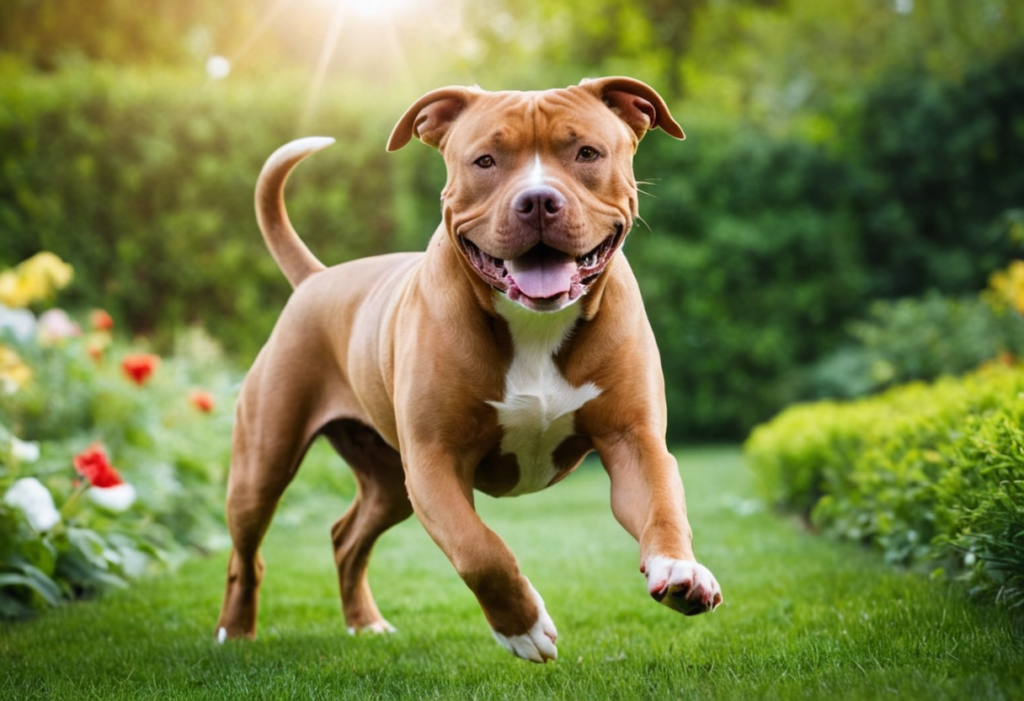This article aims to shed light on the Pitbull dog breed, covering everything from their history to care requirements, training, and health considerations.
-
- Origin of the Pitbull
- Physical Characteristics
- Size
- Coat Types
- Lifespan
- Color Variations
- Temperament and Personality
- Loyalty and Affection
- Confidence and Bravery
- Intelligence and Trainability
- Care and Maintenance
- Nutrition
- Exercise Needs
- Common Health Issues
- Training and Socialization
- Basic Training Techniques
- Socialization Strategies
- Grooming and Maintenance
- Coat Care
- Nail, Ear, and Dental Care
- Adopting a Pitbull
- Finding Reputable Breeders
- Rescue and Adoption Options
- Is a Pitbull Right for You?
- Living Space Requirements
- Time and Commitment
- FAQs
Pitbull dog breed have gained significant attention and controversy over the years, often misunderstood due to their appearance and historical background. They are known for their strength, loyalty, and affectionate nature. Despite the stigma surrounding them, when properly cared for and trained, Pitbulls can make wonderful companions.
Origin of the Pitbull
The term “Pitbull” refers to several breeds, including the American Pit Bull Terrier, American Staffordshire Terrier, and Staffordshire Bull Terrier. These breeds share a common ancestry, tracing their origins back to 19th-century England.
Early Origins
Pitbulls were initially bred for bull-baiting, a cruel sport where dogs were set upon a tethered bull. This practice was popular among the working class as a form of entertainment. When bull-baiting was outlawed in England in 1835, breeders began to select for dogs that had the physical strength and agility for other tasks, such as ratting and guarding.
Arrival in America
Many of these dogs were brought to America by immigrants, where they were further bred for their strength and temperament. They became popular farm dogs, known for their loyalty and ability to handle livestock. The breed was also recognized for its role as a family companion.
Modern Perception
In recent decades, the image of Pitbulls has been overshadowed by negative stereotypes, often associated with aggressive behavior. This misconception is largely due to media portrayal and irresponsible ownership. However, with proper training and socialization, Pitbulls can be loving, well-mannered pets.
Physical Characteristics
Pitbulls are medium-sized dogs with a muscular build, known for their strength and agility.
Size
Pitbulls typically weigh between 30 to 85 pounds (14 to 39 kg) and stand around 18 to 21 inches (46 to 53 cm) tall at the shoulder. Their size can vary based on the specific breed and genetics.
Coat Types
Pitbulls have short, smooth coats that are easy to maintain. The coat is usually dense and lies flat against the body. Regular brushing helps remove loose hair and dirt, keeping their coat healthy.
Lifespan
The average lifespan of a Pitbull is 12 to 16 years. Like all breeds, their longevity can be influenced by genetics, diet, exercise, and regular veterinary care.
Color Variations
Pitbulls come in a variety of colors and patterns, including:
- Solid Colors: Such as black, blue, fawn, and brindle.
- Patterns: Including merle, pied, or patched.
Their striking appearance is often a significant factor in their popularity.
Temperament and Personality
Pitbulls are known for their strong, loving, and loyal personalities. Understanding their temperament is crucial for potential owners.
Loyalty and Affection
Pitbulls are extremely loyal to their families. They thrive on companionship and are known to form deep bonds with their owners. Their affectionate nature makes them great family pets, often seeking out attention and love.
Confidence and Bravery
Pitbulls possess a confident demeanor and are known for their bravery. They are often protective of their families and can be wary of strangers. This protective instinct makes them effective watchdogs.
Intelligence and Trainability
Pitbulls are intelligent dogs that are eager to please. They respond well to positive reinforcement training methods and can learn commands and tricks quickly. However, their intelligence also means they need mental stimulation to prevent boredom, which can lead to undesirable behaviors.
Care and Maintenance
Caring for a Pitbull involves attention to their nutrition, exercise, and health needs.
Nutrition
Feeding your Pitbull a balanced diet is essential for their overall health:
- High-Quality Dog Food: Choose dog food that meets their nutritional needs, with high protein content and minimal fillers. Look for brands that use whole ingredients.
- Portion Control: Monitor their food intake to prevent obesity, which is a common issue in the breed. Follow feeding guidelines based on their weight, age, and activity level.
- Fresh Water: Always provide access to fresh, clean water to keep your Pitbull hydrated.
Exercise Needs
Pitbulls are active and energetic dogs that require regular exercise:
- Daily Walks: Aim for at least 1 hour of exercise each day, including walks, playtime, and training sessions. Pitbulls love to run and play, so providing opportunities for physical activity is crucial.
- Interactive Play: Engage in activities like fetch, tug-of-war, and agility training to keep them mentally and physically stimulated.
Common Health Issues
Pitbulls can be prone to certain health issues, including:
- Hip Dysplasia: A genetic condition where the hip joint doesn’t fit properly into the hip socket, leading to arthritis.
- Skin Allergies: Pitbulls can be prone to allergies that cause skin irritation and itching. Regular grooming and a proper diet can help manage these issues.
- Heart Disease: Some Pitbulls may develop heart conditions, necessitating regular veterinary check-ups.
- Obesity: Given their love for food, monitoring their diet and exercise is crucial to prevent obesity-related health issues.
Training and Socialization
Training and socialization are vital for developing a well-behaved and balanced Pitbull.
Basic Training Techniques
Implement effective training strategies:
- Positive Reinforcement: Use treats, praise, and play as rewards for good behavior. Positive reinforcement builds a trusting bond and encourages desired actions.
- Consistency: Be consistent with commands and routines to help your Pitbull understand expectations. Consistency is key to successful training.
- Short Sessions: Keep training sessions short (5-15 minutes) to maintain their focus. Incorporate fun activities to make learning enjoyable.
Socialization Strategies
Early socialization helps prevent behavioral issues:
- Introduce New Experiences: Expose your Pitbull to various environments, people, and other animals. This exposure helps them become well-adjusted adults.
- Puppy Classes: Enroll in puppy training classes for structured socialization and training. This provides a controlled environment for learning and interaction.
- Playdates: Arrange playdates with other friendly dogs to encourage positive interactions and improve social skills.
Grooming and Maintenance
Grooming a Pitbull is relatively easy due to their short coat.
Coat Care
- Brushing: Brush your Pitbull’s coat weekly to remove loose hair and dirt. This practice helps keep their coat healthy and shiny.
- Bathing: Bathe your Pitbull as needed, typically every 4 to 6 weeks, or when they are particularly dirty. Use a dog-specific shampoo to avoid skin irritation.
Nail, Ear, and Dental Care
- Nail Trimming: Trim their nails regularly to prevent discomfort and injury. If you hear clicking sounds when they walk, it’s time for a trim.
- Ear Cleaning: Check ears weekly for dirt and wax build-up. Clean with a veterinarian-recommended solution to prevent infections.
- Dental Care: Brush their teeth regularly with dog-friendly toothpaste. Dental chews can also help maintain oral health.
Adopting a Pitbull

Considering adoption? Here’s how to find a suitable Pitbull for your family.
Finding Reputable Breeders
- Research Breeders: Look for breeders who prioritize health and temperament. Avoid puppy mills and unethical breeders.
- Health Testing: Ensure the breeder conducts health tests on their breeding dogs to minimize genetic health issues.
- Meet the Parents: Meeting the puppy’s parents can give you insights into their temperament and health.
Rescue and Adoption Options
Adoption is a wonderful option for many families:
- Local Shelters: Many shelters have Pitbulls looking for loving homes. Adoption can save a life and is often more affordable.
- Breed-Specific Rescues: Look for organizations specializing in Pitbull rescue. These rescues often have knowledgeable staff who can help match you with the right dog.
Is a Pitbull Right for You?
Before welcoming a Pitbull into your home, consider several factors.
Living Space Requirements
Pitbulls adapt well to various living environments, including apartments, provided they receive sufficient exercise. They need a safe space to play and interact with their family.
Time and Commitment
Pitbulls require regular attention, exercise, and social interaction. Assess your lifestyle to ensure you can meet their needs.
FAQs
1. Are Pitbulls dangerous?
Pitbulls are not inherently dangerous. Like any breed, behavior depends on training, socialization, and environment. Responsible ownership is key.
2. Do Pitbulls get along with other dogs?
With proper socialization, many Pitbulls can get along well with other dogs. However, early introductions and supervision are essential.
3. Can Pitbulls be left alone?
Pitbulls can be left alone for short periods, but they thrive on companionship. Extended isolation may lead to separation anxiety.
4. What is the best diet for a Pitbull?
A high-quality dog food formulated for medium to large breeds is ideal. Ensure it meets their nutritional needs based on age and activity level.
5. How often should I take my Pitbull to the vet?
Regular check-ups, at least once a year, are recommended. More frequent visits may be necessary for older dogs or those with health issues.
Pitbulls are loyal, intelligent, and affectionate companions that can thrive in various environments. With proper training, socialization, and care, they can be wonderful family pets. Understanding their needs and characteristics is crucial for prospective owners. Whether you’re considering adopting a Pitbull or are already a proud owner, this guide serves as a valuable resource to help you provide a happy and fulfilling life for your furry friend.

